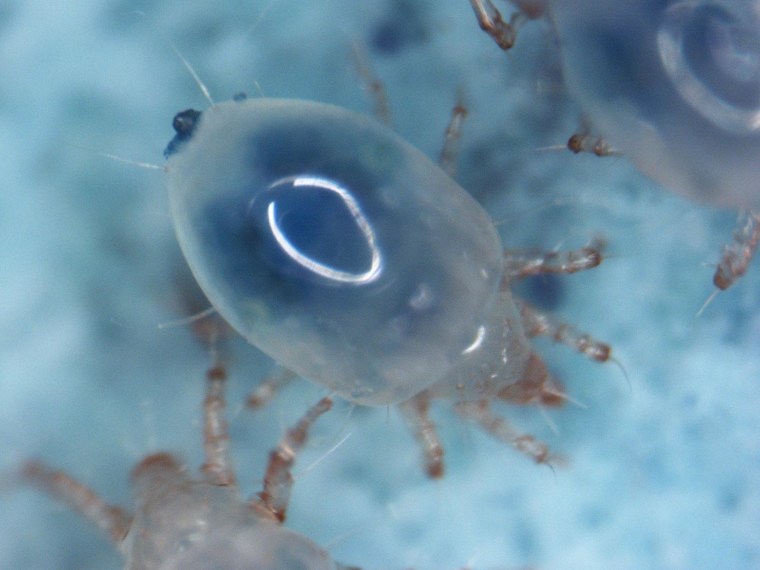Critters can evolve over just a handful of generations to survive whatever environmental maladies humans toss their way, from climate change to over fishing, suggests a new study.
"That is the first take-home message, and it is a positive message," Thomas Cameron, a biologist at Umea University in Sweden, told NBC News as he explained his new findings reported Tuesday in the journal Ecology Letters.
The findings overturn the common assumption that evolution only occurs gradually over hundreds or thousands of years, he said. Rather, it happens quickly and is intertwined with ecological change.
The research was based on the speed wild-caught soil mites adapted to a life of poking and prodding in a research lab. Within five generations, the wild mites genetically evolved their life-history traits to reverse a downward spiral toward extinction.
They did this by doubling the amount of time they spent as juveniles. That is, they delayed entry to adulthood.
"Those mites with the genes selecting for the slowest growth had the highest fecundity and so we see that, in the long term, the reason that the population recovered was that there was selection for increased fecundity, increased number of offspring per individual," Cameron said.
More offspring translates to a bigger population.
The delayed maturity adaptation held in populations of mites that had either 40 percent of their juveniles or adults harvested once a week, though the harvested populations changed in other ways as well.
For example, in the case of the adult-harvested mites, the populations delayed maturity even longer, since adulthood was akin to a death sentence. And when they reached adulthood, they were bigger than the non-harvested populations and thus able to lay even more eggs.
Mites are commonly used to study broad biological questions and the findings from the lab have implications for the management of animal populations that humans hunt and fish, noted Cameron. For example, management plans may need to take rapid evolution into account, and even nudge it along.
Instead of natural selection, think of it as managed selection. In the case of land animals such white-tailed deer, game wardens could select which animals are harvested in order to nudge deer evolution itself in one direction or another. With fish, where population loss has raised concern around the world, such management may not be possible, however.
"It is certainly not very easy for fisheries to harvest small individuals but leave the big ones," Cameron noted, in one hypothetical scenario for increasing the size of fish in a population. "That's because it's not the way the nets work."
John Roach is a contributing writer for NBC News. To learn more about him, visit his website.
